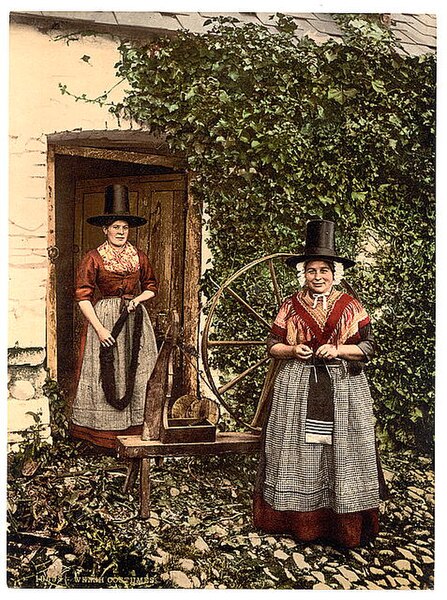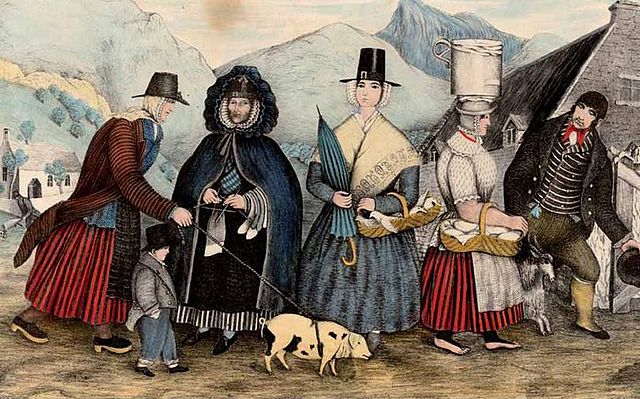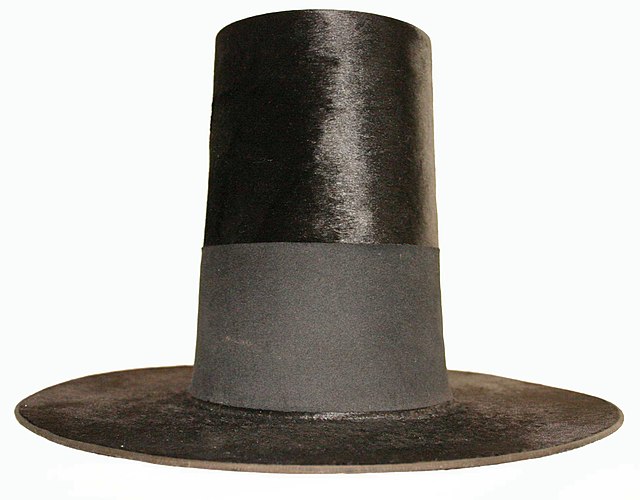Traditional Welsh costume
The Welsh traditional costume was worn by rural women in Wales. It was identified as being different from that worn by the rural women of England by many of the English visitors who toured Wales during the late 18th and early 19th centuries. It is very likely that what they wore was a survival of a pan-European costume worn by working rural women. This included a version of the gown, originally worn by the gentry in the 17th and 18th centuries, an item of clothing that survived in Wales for longer than elsewhere in Britain. The unique Welsh hat, which first made its appearance in the 1830s, was used as an icon of Wales from the 1840s.
A late 19th century photo of women in a rural Welsh costume
A study of the Welsh costume in parts of Gower (left) and Cardiganshire (right)
Welsh Fashions Taken on a Market Day in Wales (R. Griffiths, 1851)
A portrait of a Swansea woman in Welsh dress, 1818
The Welsh hat worn by women as part of Welsh national costume is a tall hat, similar to a top hat, or the capotain. It is still worn by Welsh folk-dance women, and schoolgirls, in Wales on St David's Day, but rarely on other occasions.
Sydney Curnow Vosper's 1908 watercolour Salem is one of the most iconic images of Wales. It depicts four women all wearing the same hat.
Lord Cawdor, whose successful bluff caused the French to surrender during the War of the First Coalition
Image: Typical tapered Welsh hat
Image: Can 3442








